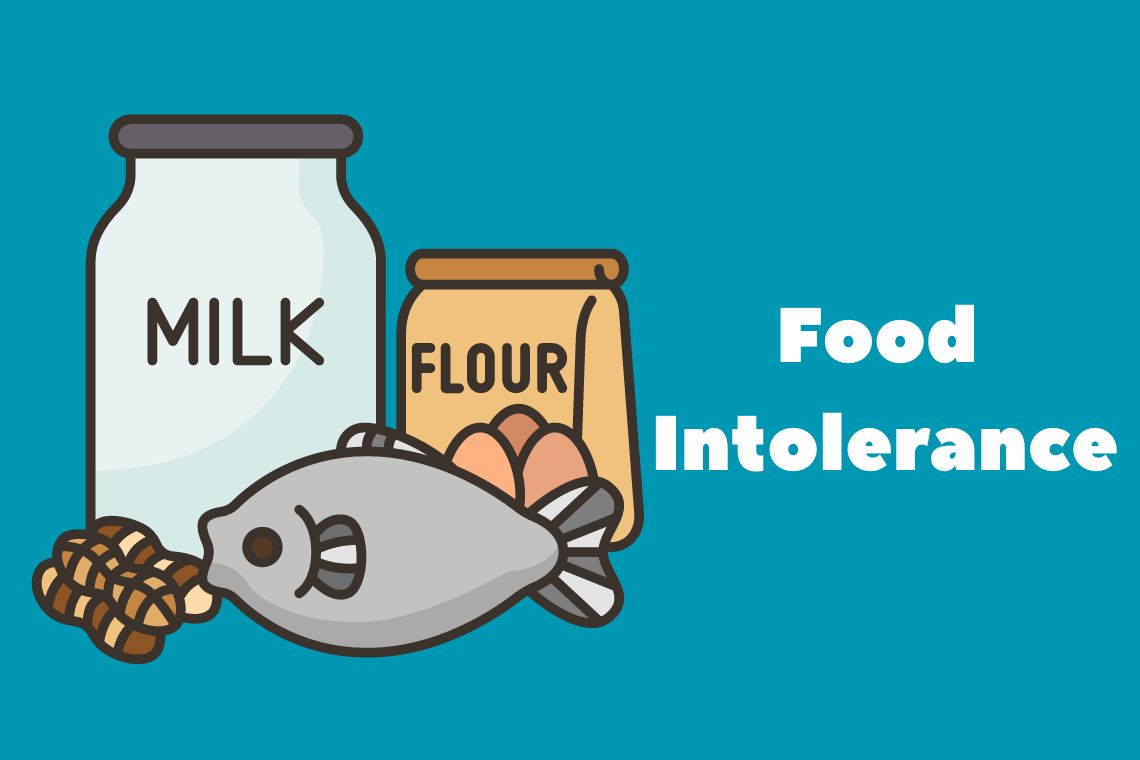
What Is Food Intolerance?
Table of Contents
Introduction
Food intolerance, which primarily affects the digestive system, refers to the difficulty in digesting certain food categories. It is not a life-threatening condition but can cause pain and contribute to symptoms such as gas, diarrhea, and constipation.
It is also known as food sensitivity, which occurs when the digestive system struggles to break down or digest specific meals. This sensitivity implies that the gut cannot effectively process certain foods, leading to symptoms such as gas, stomach discomfort, and diarrhea.
Common Types of Food Allergy
Several common types of food intolerance include lactose intolerance, gluten intolerance, fructose intolerance, salicylate sensitivity, histamine intolerance, and food poisoning.
1. Lactose intolerance
Arises due to a deficiency of the enzyme lactase, which is responsible for digesting lactose, a sugar found in dairy products. Without enough lactase, individuals may experience sensitivity or an inability to handle lactose, resulting in symptoms such as bloating, stomach cramps, and diarrhea.
2. Gluten intolerance
Also known as non-celiac gluten sensitivity, differs from celiac disease but exhibits similar symptoms. Gluten, a protein present in wheat, barley, rye, and other grains, can lead to fatigue, headaches, mental fog, joint discomfort, anxiety, and depression in individuals with this sensitivity.
3. Fructose intolerance
Is a rare dietary intolerance that can be inherited and occurs when individuals lack an enzyme that breaks down fructose. Symptoms of fructose intolerance include bloating, gas, fullness, stomach cramps, and diarrhea.
4. Salicylate intolerance
Manifests as a sensitivity to salicylates found in various vegetables, fruits, spices, herbs, and certain artificial additives. This intolerance can cause symptoms such as rashes, stomach ache, hives, tiredness, asthma, runny nose, and diarrhea.
5. Histamine intolerance
Is characterized by a deficiency of the enzyme diamine oxidase, which breaks down histamine. Foods rich in histamines, such as pineapple, bananas, avocados, cheese, chocolate, and certain wines, can trigger symptoms in individuals with this intolerance.
6. Food poisoning
Occurs when foods contain natural substances that are toxic to humans, commonly caused by bacteria, viruses, or parasites. Symptoms of food poisoning vary but typically include nausea, stomach pains, vomiting, headache, weakness, lack of appetite, slight fever, and diarrhea.
7. Various factors
Contribute to food intolerance. Some cases are inherited, such as lactose and fructose intolerance due to deficiencies in specific enzymes. Ethnicity can also play a role, with certain groups more prone to lactose intolerance.
8. Digestive enzyme deficiencies
Where the body lacks specific enzymes responsible for breaking down certain substances, are a primary cause of food intolerance. Gastrointestinal diseases, including irritable bowel syndrome, Crohn’s disease, and ulcerative colitis, are associated with food intolerances as well.
9. Sensitivity to food chemicals and additives
Such as salicylates, histamines, monosodium glutamate, and caffeine, can cause gastrointestinal discomfort in some individuals.
It’s important to differentiate between food intolerance and food allergy, as their symptoms may overlap. Food allergy testing is necessary to diagnose food allergies accurately, and fortunately, the cost of such tests is relatively low.
In Conclusion
Understanding the types and causes of food intolerance is crucial for managing symptoms and making appropriate dietary adjustments. Consultation with a healthcare professional can provide further guidance in addressing food allergy effectively.







I appreciate how you break down complex concepts into easily understandable bits.